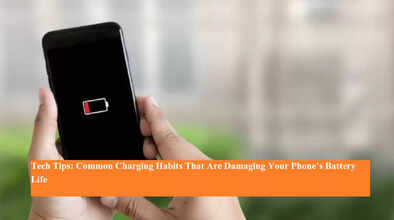Tech Tips: Common Charging Habits That Are Damaging Your Phone’s Battery Life

Smartphones have become our constant companions—used for gaming, streaming movies, or endless scrolling on social media. But while enjoying these conveniences, many users unknowingly adopt charging habits that slowly damage their phone’s battery health. Experts warn that these mistakes can reduce battery lifespan, forcing users to replace or repair their device much sooner than expected.
Overnight Charging: A Silent Battery Killer
One of the most common habits is leaving the phone plugged in overnight. After watching movies or using apps until late hours, users often put their phones on charge and sleep, assuming they will wake up to a fully charged battery. While this may seem convenient, it exposes the battery to constant stress and heat even after reaching 100%. Over time, this weakens the lithium-ion cells, making the phone drain faster during the day.
Tech experts strongly advise avoiding overnight charging and instead charging the device in shorter cycles.
The 20–80 Rule for Better Battery Health
Battery researchers and smartphone manufacturers agree that the healthiest charging range is between 20% and 80%. Charging within this window minimizes stress on the battery and slows down the charging cycle, ultimately extending its life.
Apple, Samsung, and several other major brands now offer built-in features that let users set charging limits. This automatically pauses charging once the battery reaches 80% or 90%, ensuring the battery maintains long-term health.
Why You Shouldn’t Always Charge to 100%
Most modern smartphones use lithium-ion batteries, which perform best when kept in a moderate charge range of 30–50%. Charging a phone all the way to 100% on a regular basis is not ideal, as it puts extra pressure on the battery.
In fact, a lithium-ion battery typically lasts for 300–500 full charge cycles (from 0% to 100%). Exceeding this limit reduces performance and can cause the battery to degrade significantly within two to three years. That’s why maintaining partial charges instead of full charges is a smart way to prolong your phone’s lifespan.
Avoid Fast Charging When Possible
Fast charging has become a popular feature in modern devices, but frequent use of this technology can also impact battery health. While it is helpful in emergencies, relying on it daily generates excess heat and reduces efficiency over time. Experts recommend using fast charging only when absolutely necessary, and opting for normal charging speeds whenever possible.
Always Use Original Chargers
Another overlooked factor is the type of charger. Using third-party or counterfeit chargers may save money initially, but they often fail to regulate heat properly. This increases the risk of overheating, battery swelling, and permanent damage. Sticking to the original charger provided by the manufacturer ensures steady power flow and safe charging.
Key Takeaways for Longer Battery Life
-
Avoid leaving your phone plugged in overnight.
-
Keep charging levels between 20% and 80%.
-
Don’t fully charge to 100% unless necessary.
-
Use fast charging sparingly.
-
Always rely on original chargers.
By following these simple habits, users can significantly extend their smartphone’s battery life, enjoy consistent performance, and avoid costly repairs or replacements.

